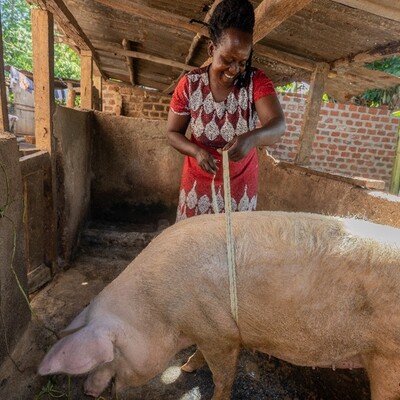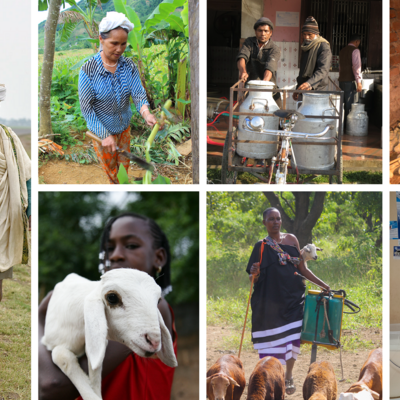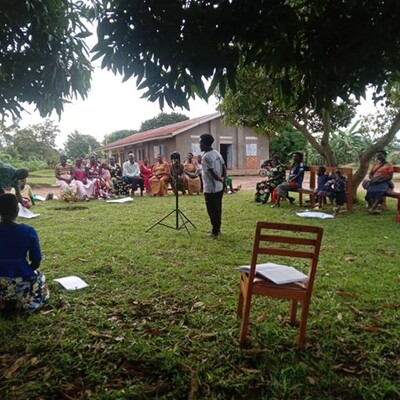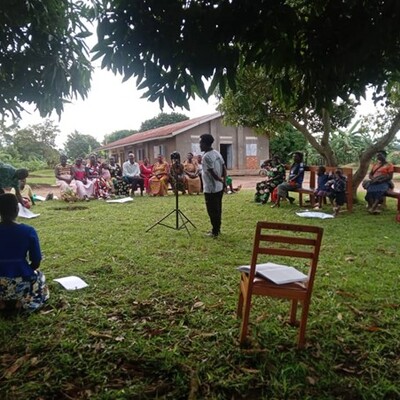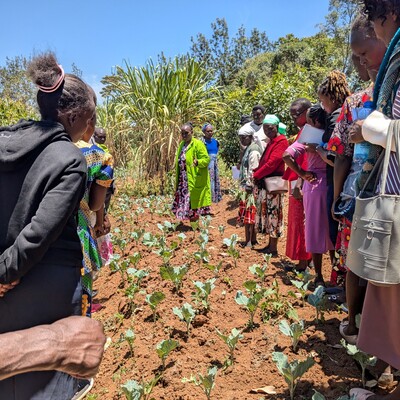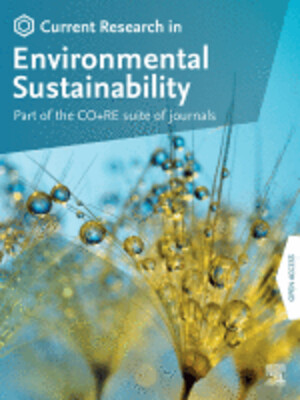
India’s Odisha state starts work on a livestock master plan
 Rearing goats in Mayurbhanj, Odisha, India (photo credit: ILRI/Susan MacMillan).
Rearing goats in Mayurbhanj, Odisha, India (photo credit: ILRI/Susan MacMillan).
The Indian state of Odisha has officially rolled-out the process of designing a ‘livestock master plan’ (LMP) with the support of the International Livestock Research Institute (ILRI).
The process started on 22 Oct 2020 with a virtual inception meeting in which R Raghu Prasad, the commissioner-cum-secretary of the Fisheries and Animal Resources Department (FARD) of the Government of Odisha praised the initiative saying the LMP would help in leveraging the ‘tremendous opportunities for growth in the sector.’ The share of the livestock sector’s contribution to farmer’s incomes in the state has risen to the current 7% from 1.5% in 2000 and the Odisha LMP will focus on helping small-scale livestock farmer groups, semi-commercial and commercial farmer groups and other stakeholders benefit more from the sector.
In many developing countries, chronic under investment in the livestock sector is a major constraint to national development goals. Livestock master plans aid in making a case for sustainable livestock investments by providing evidence on returns on investment from agriculture and livestock that the related ministries often lack. This evidence is essential to get financial resources for livestock development from ministries of finance, donors, and public and private investors.
Livestock master plans are detailed sector analyses and investment plans, comprising a livestock sector analysis of the current situation and trends, a long-term forecast (usually 15 years) of the impact of livestock sector strategies, and a medium-term (usually five years) investment plan with commodity value chain road maps. The road maps include a vision, targets and goalposts, a strategy, a sequential plan of action, and financial and human resources budgeting. During the LMP development process, the Odisha state human capacity for quantitative livestock sector analysis and planning will also be enhanced.
In Odisha, livestock is the most important economic activity only next to crop farming. Eighty per cent of the rural population owns livestock, which is predominantly the endeavour of smallholders, including marginal and landless household owners. Smallholders own 60% of the milch animals, 55% of the draught animals, 75% of poultry, over 80% of the goat, and almost the entire sheep and pig populations. Even so, most smallholders live below the poverty line. Income from livestock is expected to continue playing a crucial role in supplementing the limited income and employment opportunities.
Given that livestock contributes significantly to the gross state domestic product in the state, the LMP is expected to inform the desired sector development. Sirak Bahta, who leads the project at ILRI, notes that ILRI’s main goal is to provide technical support to the livestock experts and planning staff of FARD to develop a quantitative, evidenced-based, long-term livestock sector strategy and a medium-term investment plan whose implementation will lead to modernization of the state’s livestock sector and help achieve the state government’s societal development goals.
It is expected that the Odisha LMP will attract substantial and better targeted livestock sector investments from the finance ministry, development partners and private sector investors. The LMP process will accomplish this by first identifying needed investments and policies to develop the livestock sector and then carrying out foresight or ex-ante investment analysis to document and demonstrate the potential returns on investment of combined livestock technologies and policies that increase the livestock sector’s contribution to poverty reduction, food security while taking gender, equity, and other social factors into account.
During the inception meeting, Isabelle Baltenweck who heads the ILRI Policies, Institutions and Livelihoods Program that will spearhead the work, highlighted ILRI’s engagement in similar projects previously. ‘ILRI will bring in expertise from the successful design and implementation of the LMP in Bihar and its over 40 years experience in working towards socio-economic uplifting of smallholders,’ she said.
Drawing attention to the key constraints in the Odisha livestock economy; which include inadequate feeds, high disease prevalence, and limited market linkages; Habibar Rahman, ILRI’s regional representative for South Asia, said the LMP will address these and other matters related to youth inclusion, women empowerment, resource management, mechanization, and financing for greater development in the sector.
A draft Odisha livestock sector analysis is expected to be ready for submission by the end of 2020, while the preparation of the LMP with short- and long-term plans for implementation is expected to be completed by mid-2021.
Five national LMPs have been developed to date by ILRI and partners, and are being implemented in Ethiopia, Rwanda, Tanzania, Uzbekistan, and Bihar State of India.







